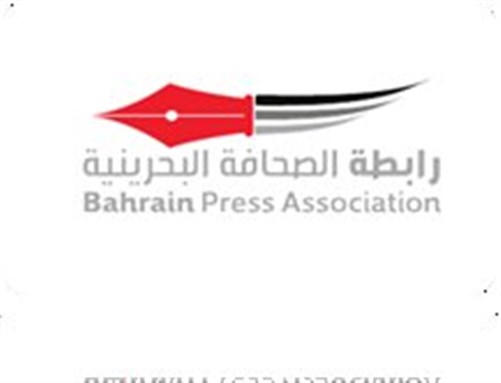[The following statement was issued by Migrant Rights on 8 May 2014]
Coverage of Qatar’s labor issues often resembles sensational tabloid journalism – intentionally misleading headlines introduce a vitriolic narrative sustained by distorted data and a casually orientalist subtext. This article in no way justifies or minimizes Qatar’s systematic exploitation of migrant laborers, but rather holds that these severe conditions require no embellishment. The hyperboles and the sloppily constructed half-truths do little but to paint the West’s scrutinizing public eye as the saviors of oppressed migrant laborers in Arab lands while comprising sustainable social and legal progress to migrant rights. Yet, numerous examples exist of international and Western construction companies coming to Qatar, and exploiting the existing legal framework for personal gain. While maintaining close oversight over their own operations, sub-contractors’ practices tend to be given little attention.
Statistics on migrant fatalities are important indicators of migrant workers’ conditions in Qatar, but most articles misrepresent their meaning and draw from them impossible conclusions. Early this year, rights organizations revealed that nearly 1,200 Indian and Nepali migrant workers have died in Qatar since 2010. Many major news outlet reported this to mean that 1,200 migrants have died in the construction of the World Cup. Though several deaths have occurred on World Cup construction sites, these numbers represent the total number of deaths recorded by each respective embassy. The cause of death was not always indicated, though in most cases even a ‘natural death’ may be linked to working conditions, especially if migrants are young. But more importantly, no information on the location of these deaths was ever revealed. The claim that each or even most migrants died on World Cup Construction sites is impossible to determine and impossible to be true, especially given the limited construction that has been initiated for the tournament; Construction on the World Cup stadiums only begun early in 2014, and only involved a few dozen workers for the enabling works of one stadium.
Perhaps most migrants were construction workers, and perhaps many did die on construction sites or due to working conditions on these sites. Their deaths are equally deplorable but they should not be distorted to fit neatly within narratives of World Cup criticism. There is a need to conduct more thorough studies on construction worker fatalities, with a particular focus on documenting accurate causes of death.
Another widely quoted statistic is not a statistic at all; the claim that almost “4,000 workers will die building the World Cup” is based on contentious calculations; though tournament organizers have announced the number of stadiums will be reduced from 12 to 8, the estimation of fatalities has not been adjusted as it is not grounded in data actually related to the World Cup. Instead, the number “4,000” is a projection based on the number of Indian and Nepali workers who have died in Qatar since 2010. The Guardian and the International Trade Union Confederationextrapolated this figure and did indicate the origin of this estimation in its reporting, albeit under misleading headlines. But subsequent reports obscured this figure, suggesting that the deaths occurred on World Cup construction sites. While it is possible that most did, the cause and location of each death once again, was not actually examined. Rather, this figure represents the total number of all deaths recorded by both embassies between in that period.
Furthermore, accountability must rest on all stakeholders and beneficiaries of the tournament. Scrutiny thus far has centered primarily on Qatar, FIFA, and Iraqi-born architect Zaha Hadid. Hadid is the architect of just one stadium and faced widespread criticism following apathetic commentary on the conditions of the workers effectuating her visions. Hadid’s comments warranted criticism but they did come in response to questions that Western firms have largely escaped. Many of these firms are much more tangibly involved – and will proportionality benefit much more than Hadid has – from World Cup construction but have only faced mild media scrutiny. Last September, Businessweek.com published a piece listing some of the U.S. and European firms involved, including Parsons Corp, CH2Hill, Hyder Consulting, and Cowi. Some rights organizations have also profiled a number of companies involved in the project. But still, the firms with direct oversight over work’s conditions have yet to face any appreciable media attention. These multi-national corporations, particularly those that claim to abide by ‘international standards,’ should be held accountable for the activities of their subcontractors. More investigation of the sub-contractors who carry out construction is essential to informing effective, targeted advocacy and determining solutions that have a tangible impact on working conditions.
Again, I do not minimize Qatar’s mistreatment of migrant workers but instead seek to elucidate it. Qatar’s response to criticisms are similarly untenable; a National Human Right’s Committee official claimed that the number of deaths is normal to the proportion of nationals in the country, but failed to investigate each incident to determine whether each death was in fact ‘normal.’ TheIndian embassy similarly held that this number of deaths was normal given the large size of the Indian population. But, as Migrant Care director Anis Hidayah has repeatedly pointed out, governments are too quick to rule out foul play in migrant deaths. Because most migrants are younger, healthy men (see the regulations on medical fitness), it is unlikely that a significant portion of these deaths can be accounted for by natural causes. While labor accidents may be a hazard of all construction work, lack of safety precautions, overwork, disregard of thermal working limits, malnutrition, and substandard living conditions are common abuses in Qatar and are likely factors in these deaths. Amnesty International thoroughly documented the conditions migrant laborers face in a report released last November.
Thus, it’s also essential for Qatar to conduct regular checks and ensure that the initial reporting of deaths is recorded accurately – as companies benefit, by being absolved from accountability, from not declaring work site or work-related deaths.
The impact of inflammatory rhetoric on galvanizing reform in Qatar – or reform in the conduct of any of the stakeholders – is questionable. Long before the current outrage (though surely in awareness of the scrutiny to come), the Qatar Foundation launched the Mandatory Standards of Worker Welfare initiative, which establishes minimum labor standards for its sub-contractors, inspects working conditions, and imposes sanctions on non-compliant firms. The foundation has also established mechanisms for grievances as well as workers committees that ensure workers’ voices are heard, setting the framework for essential collective bargaining rights. Critics argue that the initiative is damaging to workers rights in the long term, as it establishes a dual regulatory system that excludes most workers. But the foundation is government funded and has the potential to set a successful precedent for the national legal system. The initiative does not address each root of cause of exploitation, which can be traced to the Kafala system, lack of employment mobility, the under-regulated recruitment system, and many other factors, but it is a mark of the gradual, grass-roots progress necessary to secure migrant labor rights.
Of course, this is not to suggest that Qatar is unconcerned with its public image; impelled by global criticism, officials have repeatedly pledged to protect migrant labor rights and met with rights groups such as the International Trade Union Confederation and Amnesty International. The labor ministry also recently announced a number of prospective reforms to the labor industry at large and World Cup projects specifically, including the prospective wage protection system and changes to the sponsorship system. Follow-through of these still-vague commitments can only be measured with time, though critics argue that not enough has changed since Qatar was granted hosting rights in 2010.
Qatar should be under the spotlight and this moment should be used drive migrant worker’s rights. But the success and sustainability of this strategy requires an inclusive discourse, one that is impeded by these inflated pieces. Skewed information delivered in vehement language not only alienates Qatari citizens in the short-term, but discredits valid criticisms by those who will continue to work on migration issues long after the World Cup fervor fades.
But rather than nurturing discussion with local organizations in Nepal, India, and Qatar, these articles tend to parrot the same commentary from self-professed watchdog organizations external to the labor migration process. The tone of many articles is slanted in such a way that suggests there are no viable solutions except to relocate the tournament. This of course is not a solution for migrant workers but for those who wish to save them. Is the question asked, how would moving the World Cup actually benefit migrant workers in Qatar? It is precisely the presence of the tournament that is drawing scrutiny (from both within and outside of Qatar) and creating the ripe conditions for enduring legal and social reform. But the facile portrait of Qatar’s labor issues seems to paint Western actors as the purveyors of social change and human rights, migrants as first victims and then beneficiaries but never agents of their own mobility, and Qatari citizens as muted subjects incapable of driving forward change.
Few articles provide solid critiques and real solutions. The following piece
written by Aakash Jayaprakash, a second generation Indian expatriate in Qatar, offers one of the more comprehensive and inclusive perspectives of Qatar’s migrant issues:
"In some of the more nuanced pieces, journalists are able to show the complex nature of migration, covering the problems that begin in the sending countries and are perpetuated throughout the migration life cycle.
It is true the Qatari government has a key role to play in addressing this issue; but there is a collective responsibility we share as well, being a part of this system. There is much one can and should do to help improve the quality of life of low-income migrant workers in Qatar.
If we see a crime, it is our duty as law-abiding citizens and residents to report it to the necessary authorities. Exploitation and abuse of blue collar workers is a crime, and we need to report these as well."
Read Aakash Jayaprakash`s full article here
![[Logo of Migrant Rights. Image from migrant-rights.org]](https://kms.jadaliyya.com/Images/357x383xo/migrantrights.png)

















